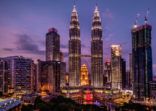Launched in May this year, VAM Funds Accessible Clean Energy Fund had as much as 26% cash levels in the portfolio in October. Turner said she recently deployed the some of the cash into Chinese clean energy companies, which now have a 26.2% weighting in the portfolio.
“Our China exposure is currently at 26.2% and is unlikely to go below this figure.”
One of the companies where she recently made investments is China’s biggest wind-turbine maker Xinjiang Goldwind Science and Technology Company. Other portfolio exposure in Asia includes Gamesa Wind Turbines in India and Canadian Solar in Japan.
Two of the fund’s largest positions are in Hong Kong-listed companies, she added.
“As regards the cash position, we are now below 10%. However, we had high levels of cash in the past as we have been concerned about the volatility of the market, and have been slowly feeding our cash into the market since inception.”
China clean energy appeal
According to Turner, even if China’s economic growth slows, it is still growing, which means energy consumption is growing, and renewables are becoming more affordable, making them more attractive.
China sees renewables as a new industry supporting job creation and exports, unlike some other countries that view renewables as a future competing energy to fossil fuels, she said.
“Last but not least, the Chinese government realises that there has to be a sea change in the energy drivers of their economy because the air quality and environmental problems are becoming too great to ignore – the pollution and climate change issue is unavoidable and has to be confronted every time a resident of Beijing, for instance, steps out of their front door.”
The above issues were drivers behind the recent bilateral climate change agreement between the US and China announced in November.
China set a target to expand total energy consumption coming from zero-emission sources to around 20% by 2030.
The agreement also says China will deploy an additional 800-1000 gigawatts of nuclear, wind, solar and other zero emission generation capacity by 2030 – more than all the coal-fired power plants that exist in China today and close to total current electricity generation capacity in the US.
“China is targeting 100GW of solar and 170GW of wind capacity by 2020. These numbers show just how big the Chinese market is, and how quickly the clean energy sector in China is going to have to grow in the next five years.”
“In addition to this growth in renewables generation, the next three-five years will see huge growth in other parts of the clean energy value chain in China too, like waste-to-energy, energy efficiency, grid upgrades and infrastructure improvement.”
Japan, India on radar
Turner said Japan looks interesting given the research the country is doing in energy storage, particularly early stage fuel cells for electric vehicles and distributed generation.
India has huge potential too, she added. The country has a coal intensive energy profile, similar to China, but has only one-tenth of its installed solar capacity.
“Per capita, China’s power consumption is five times that of India, and India has a far greater percentage of the population with no electricity whatsoever, leading the government to quintuple the current target for solar from 20GW to 100GW by 2022. “
“For this to be achieved, India will have to ramp up in the near future as India’s entire power generation capacity is only 255GW today from all energy sources.”
Fund positioning
The Luxembourg-registered vehicle seeks to make socially responsible investments in companies that make up the entire clean energy value chain, from raw materials through to equipment manufacturers, project developers, grid technology and energy efficiency.
The fund aims to invest in all kinds of technology that will conserve resources, reduce energy use and drive down the cost of clean energy generation.
As per the October factsheet, the fund’s top holding was in Wasion Group Holdings, an energy measurement instrument supplier in China, which is listed on Hong Kong Stock Exchange.
Other names in the top holdings list include Japan’s Canadian Solar, SunPower, China Everbright and EDP Renovaveis.
In October, the fund saw its return falling by 5.2% compared to its benchmark index, Wilderhill Clean Enegy Index, which declined by 4.6%. Since inception, the fund gave a negative return of 9.7% compared with the index fall of 0.3%
The manager attributed the fund’s recent underperformance to several factors, including high cash allocation and market volatility.
“Absolutely our higher cash position has held us back from participating in recent highs.
















